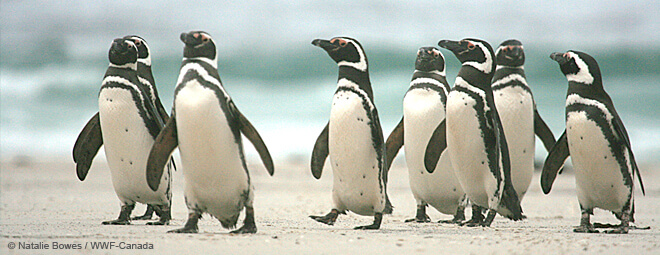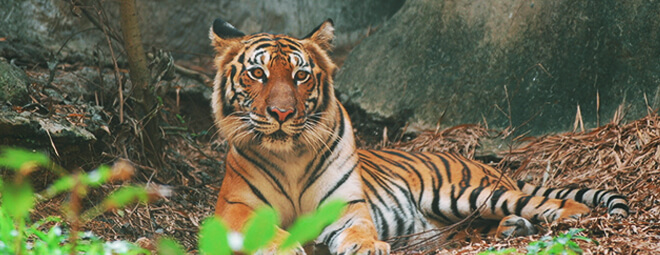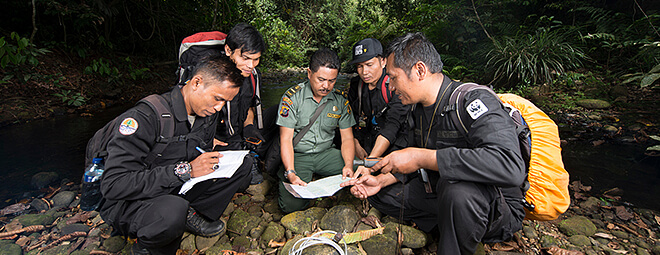Staff Blog : Look for tigers in the Greater Mekong forests! Research activity with automatic cameras.
2020/01/16
Hello, I’m Tum of WWF Thailand. I’m researching Indochinese tigers.
My field work is located in the thick forest in the Greater Mekong region of the Indochinese Peninsula! And on my PC in the nearby office.
I’m in charge of checking 2,000 or more photos and videos everyday there.
Elephants filmed in a national park in Thailand (automatic camera).
These photos and videos are all taken by automatic cameras for research (trail cameras) set in the forests.
Information such as the estimated population of tigers, habitats and prey distribution are pieced together based on the location of the pictures and films.

Camera traps for research.
The mechanism of the camera trap is that an infrared sensor reacts to moving objects to take a picture, which enables it to capture animal figures and inhabitation data without our presence.
When setting the cameras, we try walking at the same height of tigers to make sure if cameras activate normally.
The research area of this project is located in precipitous mountain forests spreading along the border between Thailand and Myanmar.
It is one of the remaining and limited habitats for endangered Indochinese tigers.
It is of great difficulty to make a round trip for many days, to go deep into the forests and set/collect the cameras.
We want to catch pictures of tigers but often of things trigger the cameras.
For example:
●Moving leaves blown by the wind (sensors activated and filmed them, this happened often...)
●Occasionally, wild animals (made me happy and grin)
●Very rarely, A TIGER!! (jumped with joy!)
Work is sober and steady, but without this basic data, it is impossible to make a conservation plan for wildlife.
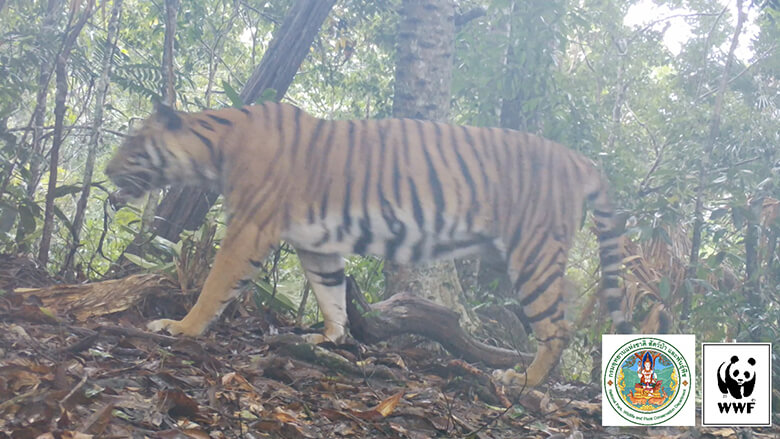
Finally, managed to shoot an Indochinese tiger. Although they used to be widely distributed in the Greater Mekong region, nowadays the population in both VietNam and Cambodia has disappeared, and the population in Thailand is estimated to be less than 200.
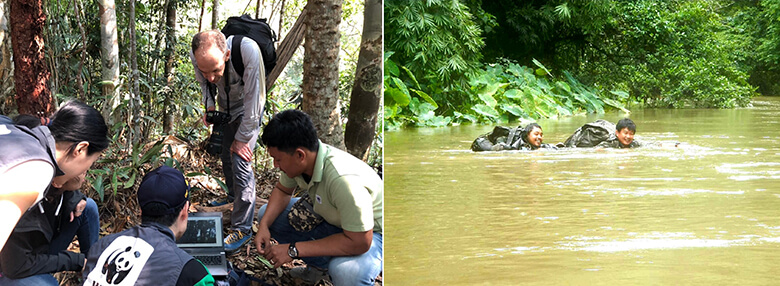
Once setting cameras, and then we returned to collect data for checking after a fixed period. If there are any wildlife figures taken!? It is a very exciting moment. However, sometimes roads turn into rivers in the rainy season!It was ok this time as we were on the way back after setting cameras, but what if we were carrying cameras and equipment?!Well, just thinking about it makes me have a cold sweat.
Currently, especially in Myanmar, a decrease of natural forest is becoming more serious due to an increase of natural rubber plantations for exporting to Japan and other countries.
As a part of our initiatives, we at the WWF aim to stop the decrease of forests, so research activity is important.
Support from Japan also helps this project to save tigers beyond the borders.
Please keep watching and supporting us!
(Translation/Editing: Forest rep. Ito)
Animals in Greater Mekong, captured by camera traps
Until meeting this tiger, I’ve seen tens of thousands of videos and photos.
I’m so delighted when I saw this…I can’t express it in words.
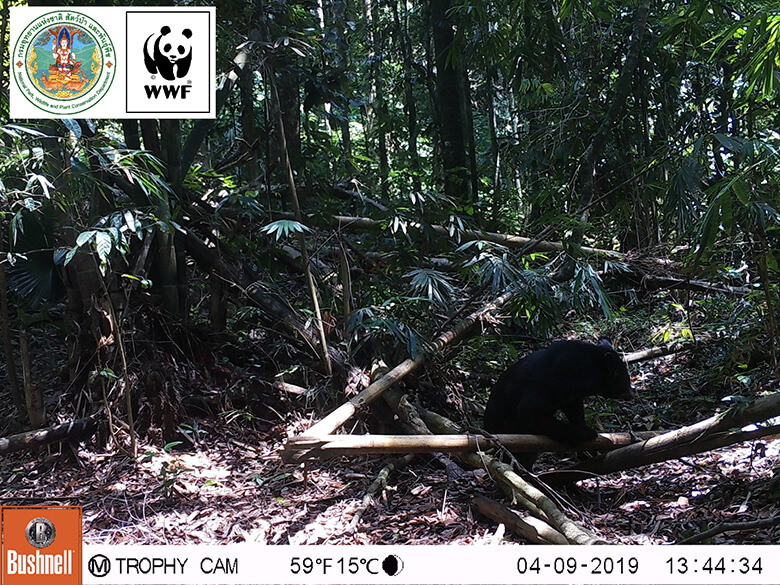
Asian black bear that also inhabits Japan.It is on the Red List, so is Vulnerable (VU).One more species, Malayan sun bear, also inhabits here.
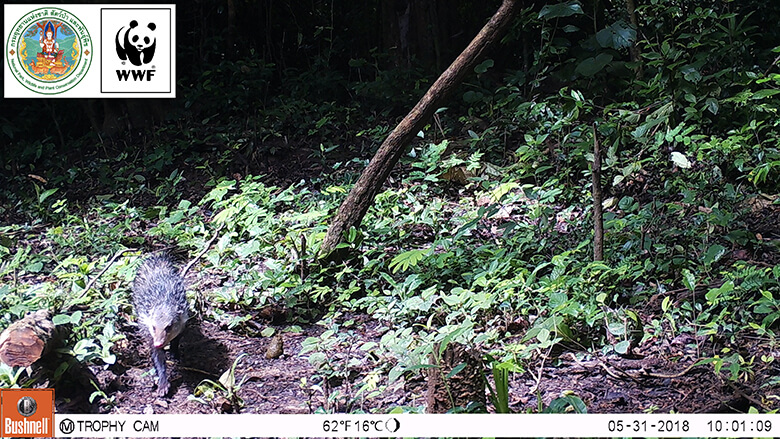
Crab-eating mongoose.
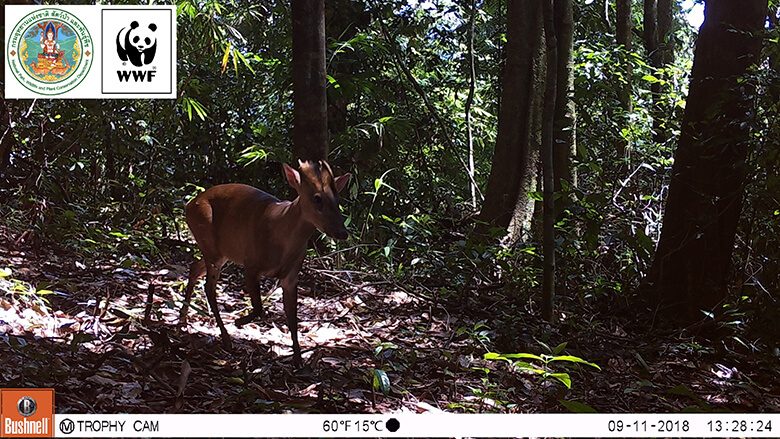
Fea’s muntjac. It is one of the valuable wildlife that inhabitants confirmed only at the border areas between Thailand and Myanmar.
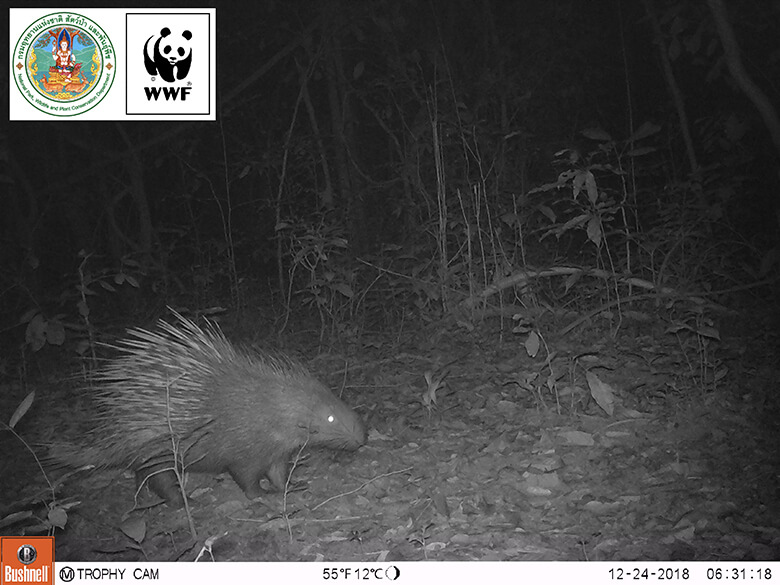
Due to lack of light, photos are taken in black and white at night. Malayan porcupine appeared on Christmas Eve in 2018.



